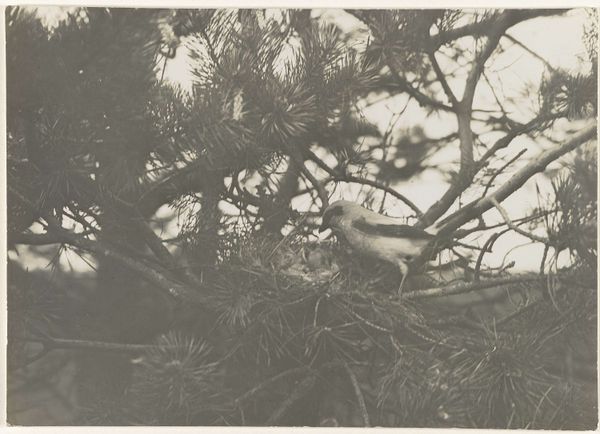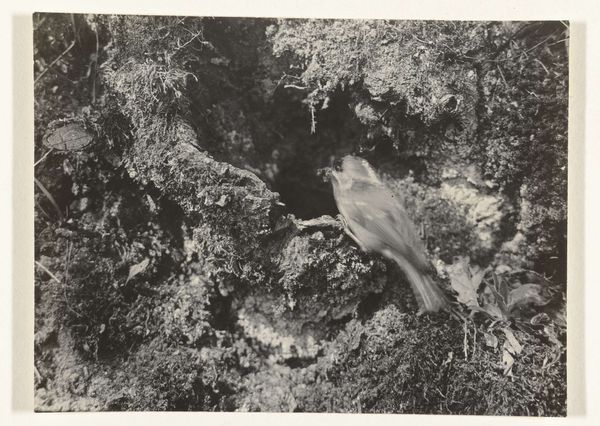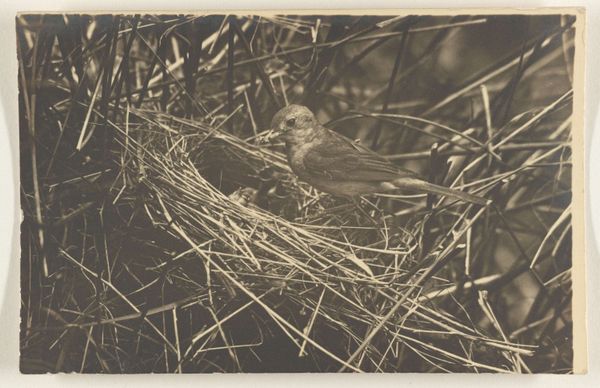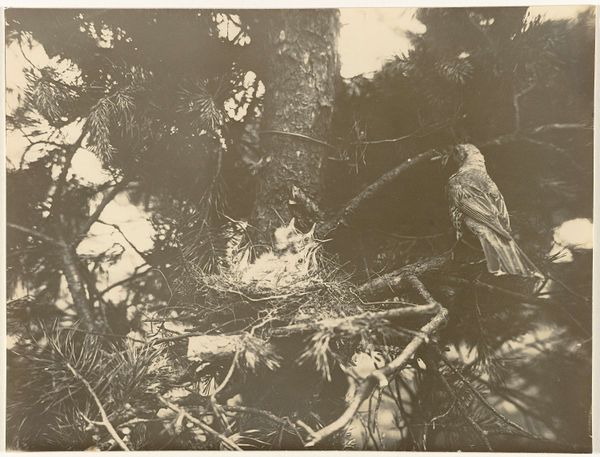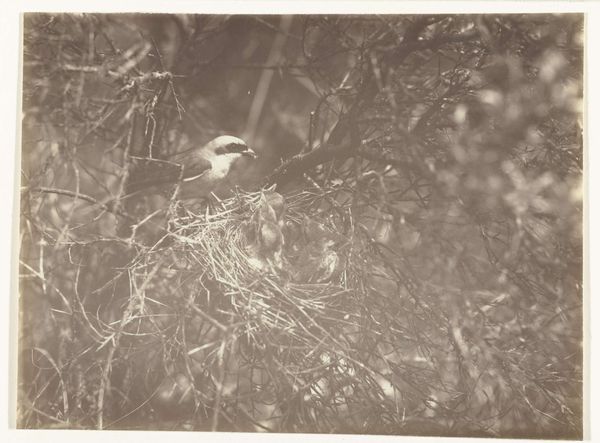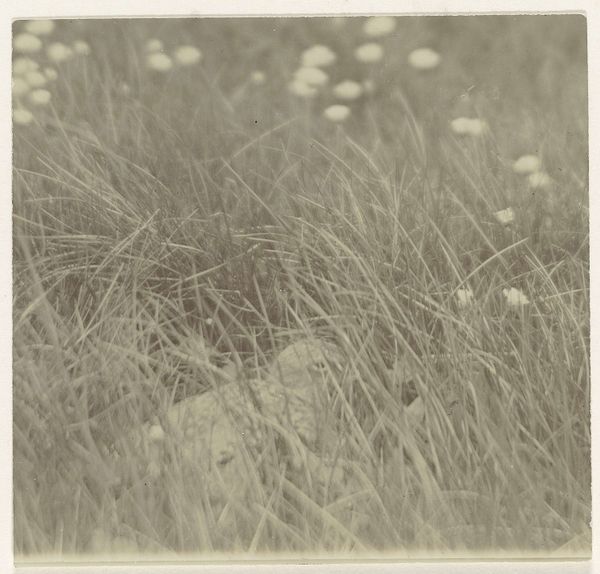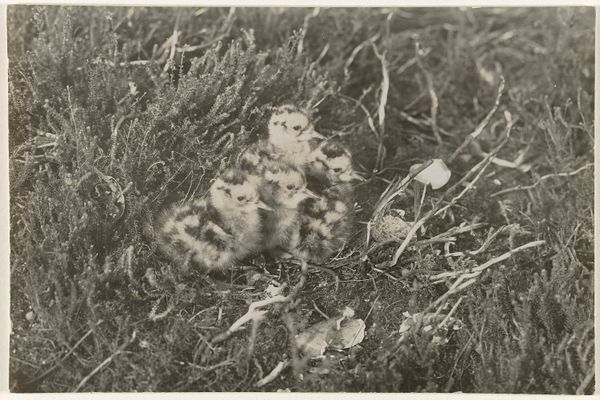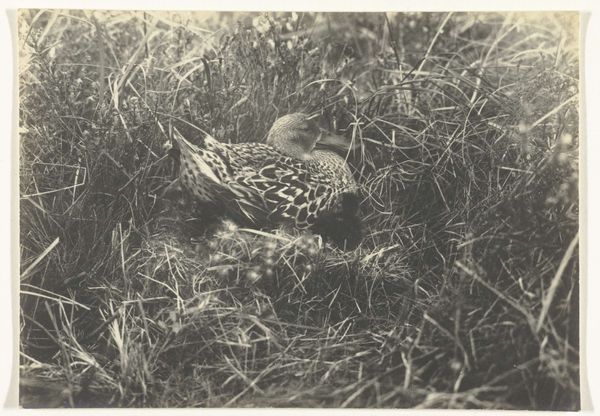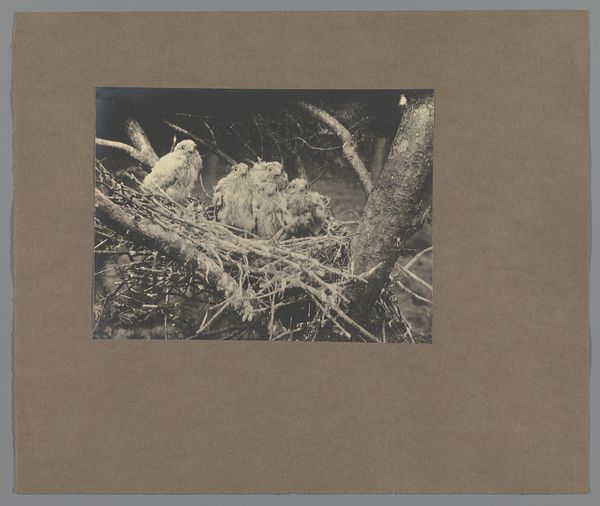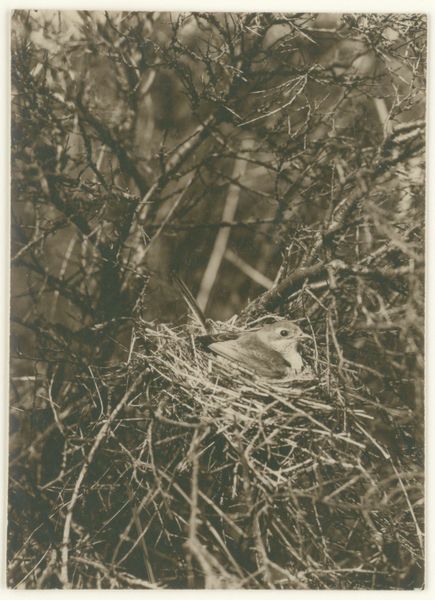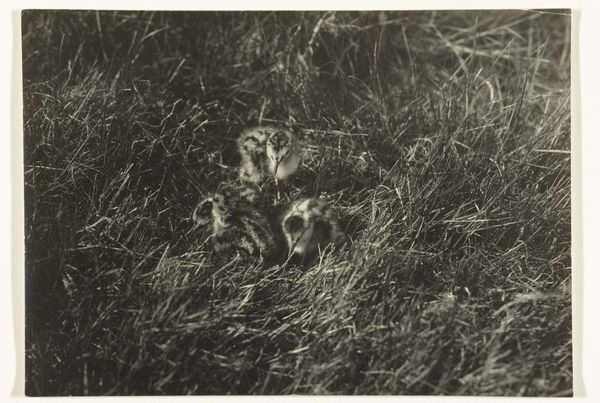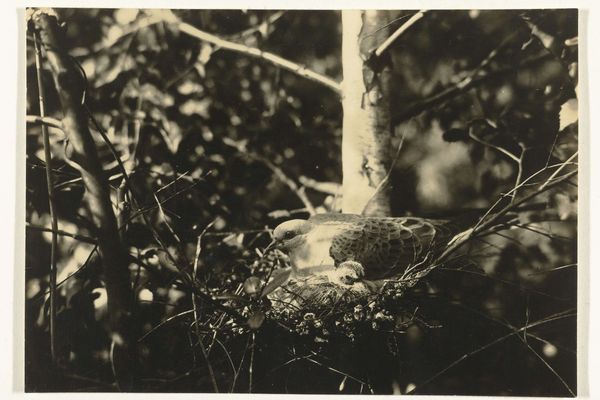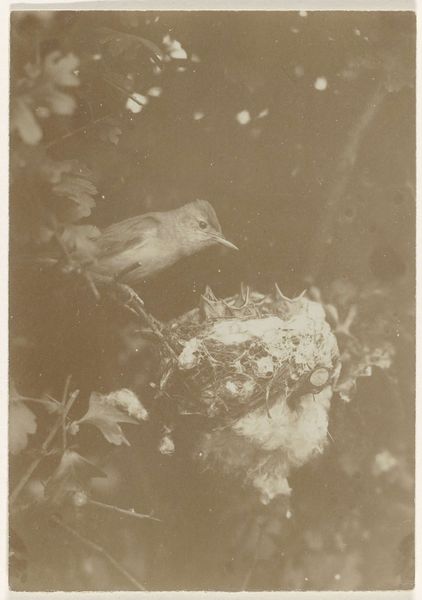
photography
#
organic
#
portrait
#
still-life-photography
#
landscape
#
photography
#
realism
Dimensions: height 125 mm, width 173 mm
Copyright: Rijks Museum: Open Domain
Editor: So, we’re looking at Richard Tepe's photograph, "Hop in de weide," which translates to "Hoopoe in the Meadow," taken sometime between 1900 and 1930. The detail is quite striking for a work of this period. What's your interpretation? Curator: Tepe's photograph is an interesting artifact, exceeding mere aesthetics. Consider the early 20th century context. The rise of photography offered new modes of documentation, but also artistic expression, frequently intersecting. To me, this piece prompts considerations of scientific observation versus pictorialism. Is this primarily a record, capturing the Hoopoe, or is it making broader claims? Editor: That's fascinating! It feels very immediate and immersive, but how might photography of wildlife factor into cultural norms back then? Curator: Consider that burgeoning fields such as ornithology found a powerful tool in photography. Tepe's work perhaps participated in popularizing natural history, shaping public perceptions of the environment. It is also significant to note where these photos circulate: within scientific journals, art exhibitions, or even postcards. Where Tepe presents his bird tells us a great deal about its cultural significance. Do you feel that Tepe captures a particularly “Dutch” aesthetic within this wildlife photography? Editor: Perhaps through its directness? Or maybe the naturalism? It feels very much about observing nature without idealizing it. Curator: Precisely! The lack of idealization – the seeming "rawness" – contributes to its power. The tall grass makes me think that Tepe isn’t trying to pose an untouchable nature scene. Rather, he wants to show that both the wild and industrializing landscapes can occupy the same space. Tepe’s "Hop in de weide" provides an opportunity to question the evolving human relationship to nature and photographic imagery at that historical juncture. Editor: That is quite a fresh and multifaceted view, helping me better contextualize early wildlife photography. Thank you.
Comments
No comments
Be the first to comment and join the conversation on the ultimate creative platform.
